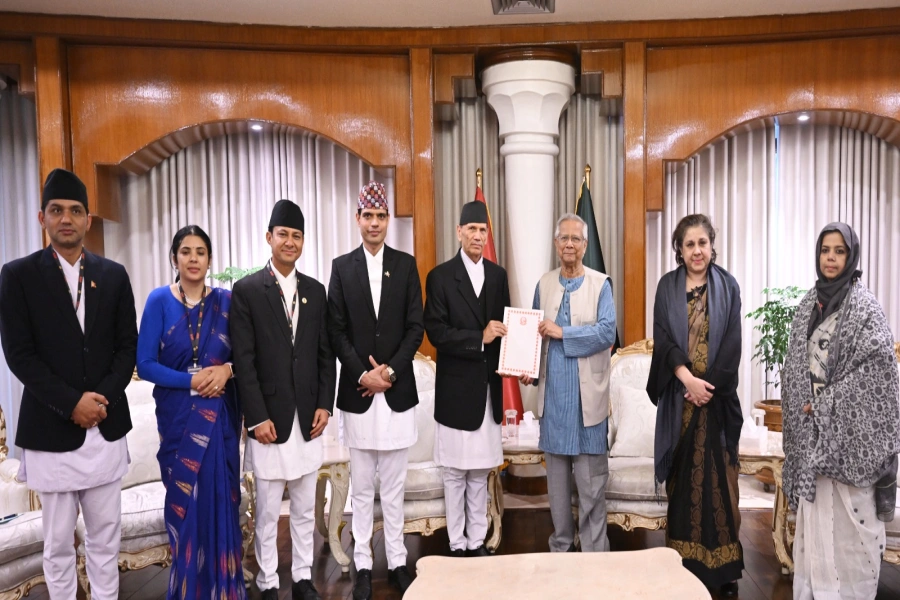Without proper plans, sufficient technological tools, and much-needed awareness among all stakeholders, it won’t be possible to achieve positive outcomes from ongoing online education.
Prior to COVID-19 pandemic, the now popular online education system had rarely become a priority for Nepali academic institutions. Now the nationwide lockdown has compelled the majority of the institutions and their teachers to run their classes online, mostly by using Zoom software. The evolving trend in the Nepali education system has thus made Nepali teachers, students, and parents familiar with the online classes. Thus COVID-19 has made virtual teaching and learning a new normal. But without proper plans, sufficient technological tools, and much-needed awareness among all stakeholders, it won’t be possible to achieve positive outcomes from ongoing online education. The past experiences have shown that poorly designed technologies rather discourage the teachers and students from adopting it.
Amid the ongoing lockdown, a lecturer at a community college conducting online classes in Business Studies shared with me that the truants' graph is at an increasing rate in his class. As a consequence, no more than 25 percent of the students are attending his classes. Due to this reason, he is planning to repeat these classes in-person when the situation normalizes. In addition, he also shared that his ongoing classes do not count as part of his college academic calendar. Similarly, another lecturer at a private college also shared that she feels her classes rather boring and less interactive as her only work during the online classes is to share her prepared slides for the students.
The most recent data shared by the UNESCO Institute for Statistics (UIS) indicates that COVID-19 has severely affected in-person education facilities in more than 190 countries—thus affecting 1.57 billion learners, 90 percent of the world’s students. In case of Nepal, 35,055 schools, 1,435 colleges and 11 universities have remained closed since March 24. As the number of cases rises in the country, there are no definite plans for the reopening of these institutions. These institutions lack the most basic infrastructures to continue classes for the students by taking all measures, including maintaining social distancing, to prevent further spread of COVID-19. To make situations worse, Nepal’s educational institutions also have inadequate WASH facilities. No doubt, opening educational institutions during the pandemic will lead to the further spread of the disease, most probably at an alarming rate.
Online Education A broader solution

I have found that there exists a considerable gap between the ratio of public and private colleges conducting online classes during the lockdown. While major public colleges and campuses are waiting for guidelines from the government to plan accordingly, private colleges have already begun offering online education but they are scrambling with "wrong" modalities and approaches that are sure to lead the students’ learning objectives in the wrong direction.
For me, online education is what I studied at the University of Geneva while studying for a course “Education in Emergencies”. The course had a friendly user-interface and easy-to-navigate functions to accommodate course plans supplemented with the live and recorded video/audio materials from the tutors plus required course books (learning materials), assignment and grading system, the platform for group work, discussion forum, option to interact among teachers and peer-student through chat, audio, and video from any parts of the world at their convenience. Recently, I managed to check through some of the online learning platforms provided by the Nepali educational institutions and I found most of the local institutions are missing the core of the online education system.
There are larger numbers of private companies in Nepal offering school level Management Information System (MIS), while only a few have reliable and dedicated products for higher education. The current technologies are more focused on data management, accounting, library service with very limited features on Learning Management System (LMS). As one of the developers of higher education MIS, companies are not encouraged to advance their systems because the government and colleges are not ready to invest in the "right" online education.
Apart from being a good option for local students and teachers to continue their learning activities during the lockdown, the online education system is sure to benefit most of the working professionals to learn during the most convenient time from their homes or offices. But for benefiting the learners, Nepal’s online education system has to evolve a lot.
We lack technologies that are fully functional at a reasonable cost, more preferably at the local level to adopt. The latest Management Information system (MIS) report from Nepal Telecom Authority (NTA) states that the internet penetration rate is 71.76 percent. With this massive improvement in internet penetration, digitalization, and larger numbers of youth seeking more than traditional learning, Nepal should now invest more in technologies to enhance its online education system.
In addition to making necessary preparations for adopting online education system—training students, teachers and parents to get used to with this system while also taking maximum benefits out of it—Nepal also needs to partner with country’s private sector to increase annual investment in country’s technology sector to help the local stakeholders to build required infrastructures and products needed to host and manage standard online classes.
In this context, Covid-19 pandemic has worked as a catalyst to encourage the concerned government and the private sector stakeholders to work on this area. While initial investment in internet bandwidth, e-training, e-materials, etc might be higher in the long run it will reduce the cost burden on the government, parents and students for fancy infrastructure, travel, uniforms, textbooks and other essentials for face-to-face classes.
Besides, those who normally have to sacrifice their learning due to professional and other family-related engagements can also take benefits of the improved local online education facilities. Technology could help the government to also merge schools and colleges that have lower enrolments and reallocate the extra funds to promote technology-based education thus reaching an even larger group of learners from across the country.
Nepali parents often struggle their whole life trying to support their children's education. Yet, millions of Nepalis do not have access to adequate quality of education within the country. In this context, the government-targeted subsidies on technology and expansion of broadband internet are necessary for those who lack capacity for transition into online education. The era of online education will create civilized, cultured, qualified, competitive, entrepreneurial, creative, and confident citizens with the hope for the future.
The author is a co-founder of Pragmatic Research and Innovations Pvt Ltd, an education-based research firm







































